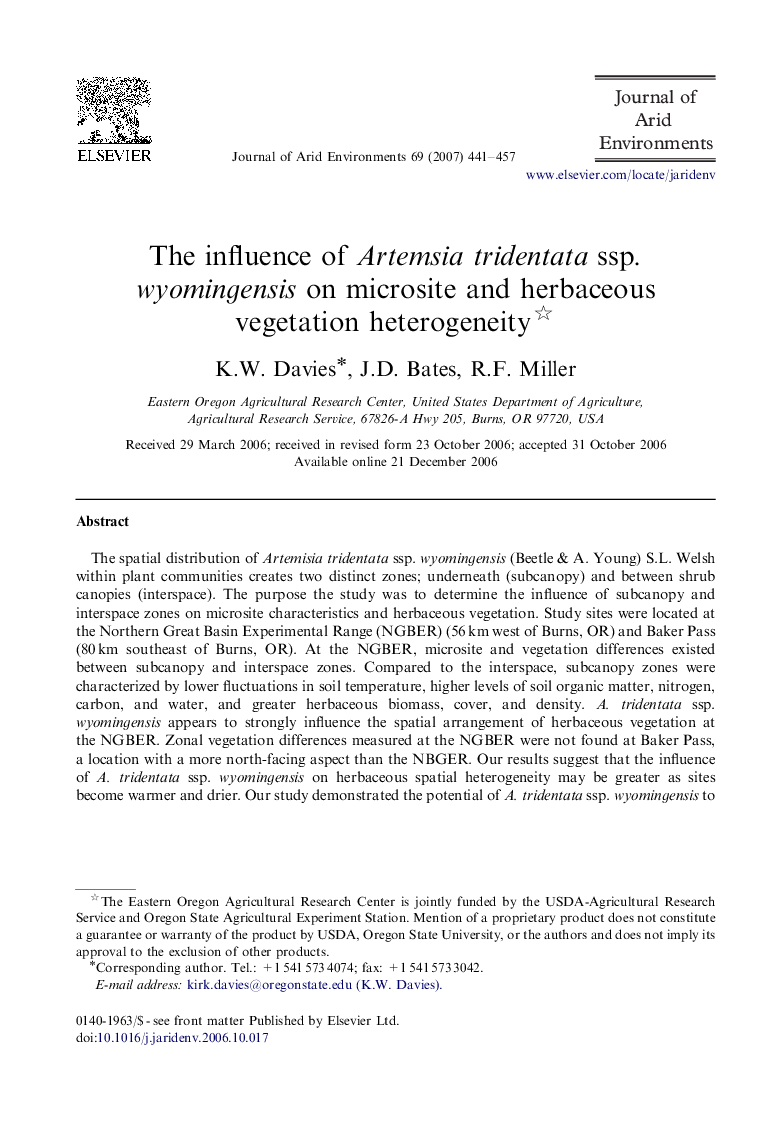| Article ID | Journal | Published Year | Pages | File Type |
|---|---|---|---|---|
| 4394615 | Journal of Arid Environments | 2007 | 17 Pages |
The spatial distribution of Artemisia tridentata ssp. wyomingensis (Beetle & A. Young) S.L. Welsh within plant communities creates two distinct zones; underneath (subcanopy) and between shrub canopies (interspace). The purpose the study was to determine the influence of subcanopy and interspace zones on microsite characteristics and herbaceous vegetation. Study sites were located at the Northern Great Basin Experimental Range (NGBER) (56 km west of Burns, OR) and Baker Pass (80 km southeast of Burns, OR). At the NGBER, microsite and vegetation differences existed between subcanopy and interspace zones. Compared to the interspace, subcanopy zones were characterized by lower fluctuations in soil temperature, higher levels of soil organic matter, nitrogen, carbon, and water, and greater herbaceous biomass, cover, and density. A. tridentata ssp. wyomingensis appears to strongly influence the spatial arrangement of herbaceous vegetation at the NGBER. Zonal vegetation differences measured at the NGBER were not found at Baker Pass, a location with a more north-facing aspect than the NBGER. Our results suggest that the influence of A. tridentata ssp. wyomingensis on herbaceous spatial heterogeneity may be greater as sites become warmer and drier. Our study demonstrated the potential of A. tridentata ssp. wyomingensis to create herbaceous spatial heterogeneity, elucidated that the relationships between A. tridentata ssp. wyomingensis and herbaceous species are complex, and can be site specific.
